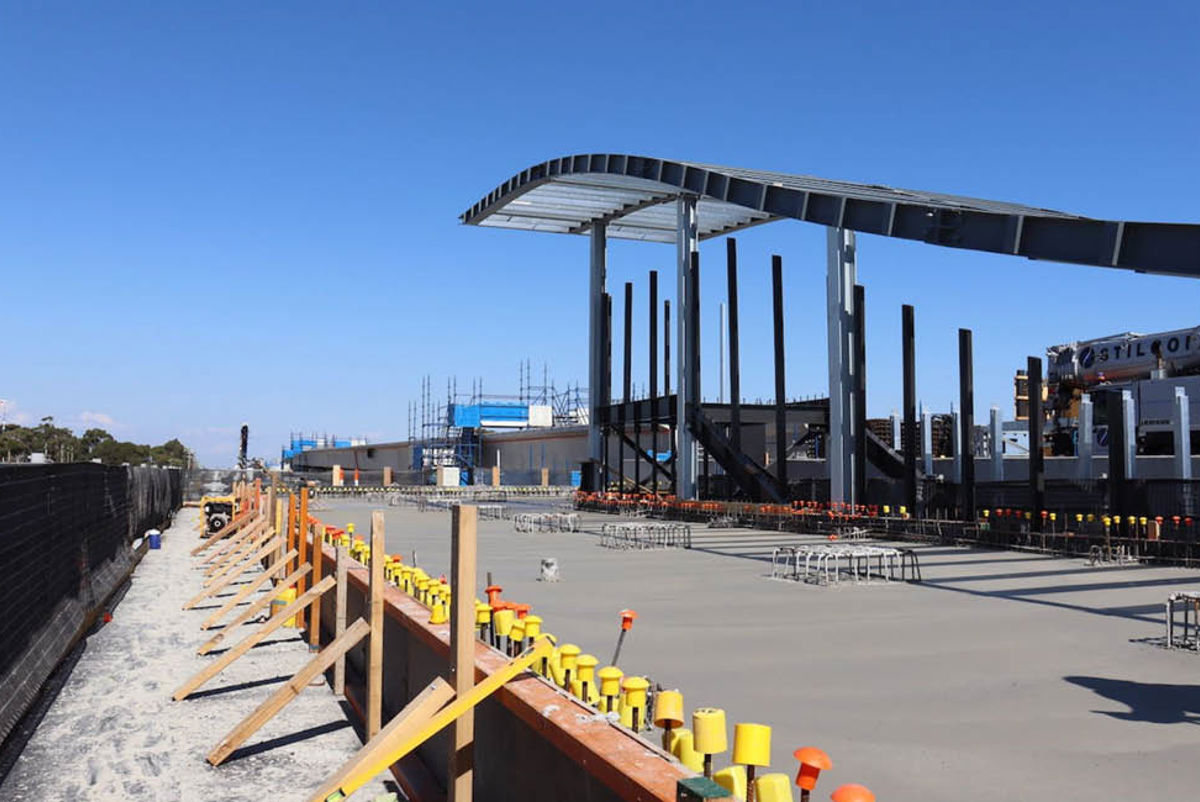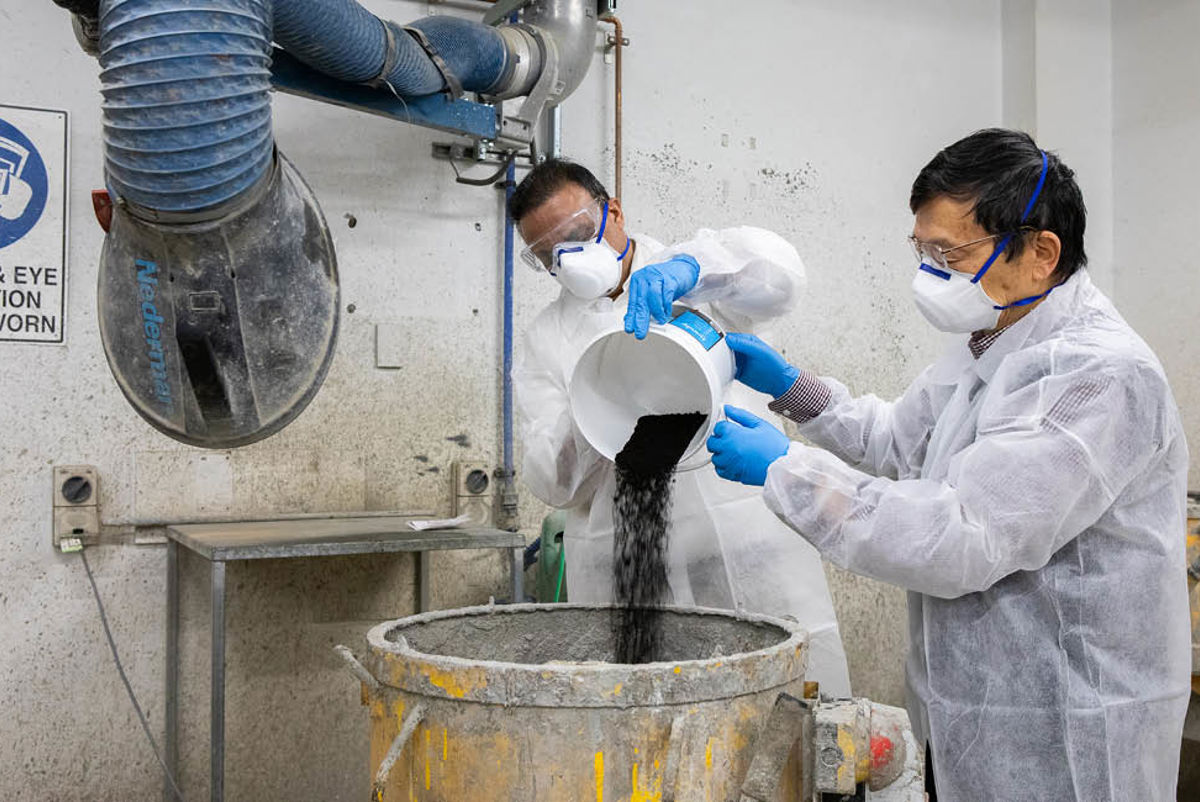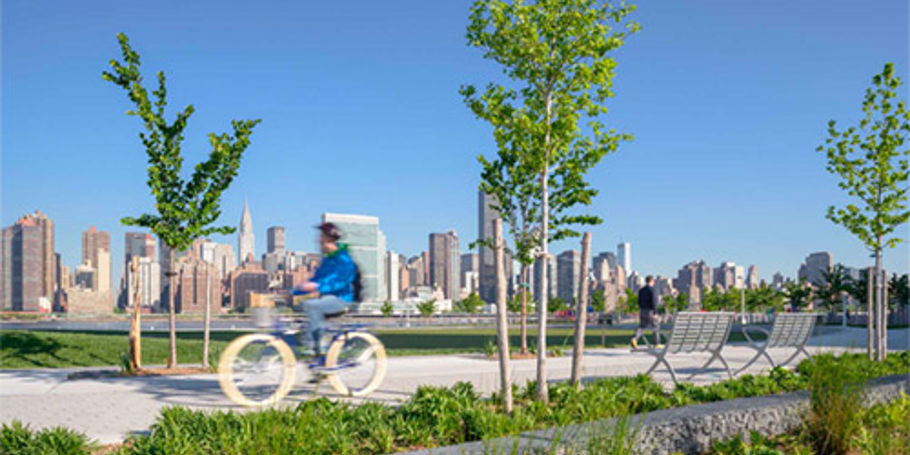Catalysing a new supply chain for sustainable concrete
Concrete is one of the most carbon intensive materials in infrastructure. We are innovating and implementing sustainable alternatives to facilitate a step change in industry and create a long-lasting impact.

As Australia prepares for a low-carbon economy, governments and the infrastructure sector are striving to reduce their greenhouse gas (GHG) emissions. A critical step in this process is meeting Scope 3 decarbonisation requirements, which capture emissions produced from purchased goods, transport, and waste disposal. One of the hardest to abate areas when it comes to reducing Scope 3 emissions, is the carbon in concrete. Reflective of our dedication to sustainable development, we have taken on this challenge.
Tackling carbon intensity
According to recent reports, construction accounts for approximately 40 per cent of global GHG emissions of which concrete makes up nearly nine per cent.1 Concrete is uniquely strong, durable in aggressive conditions, and has a potential design life of more than 100 years. It’s integral to Australia’s roads, bridges, buildings, railways, housing and more, so it cannot simply be replaced. Instead, it must become sustainable.
The carbon intensity in concrete is largely due to the commonly used binder, cement. Manufacturing cement requires quarrying and transporting limestone and heating it to extreme temperatures. To tackle these emissions, we are innovating to replace cement with locally sourced sustainable, alternative materials. Importantly, we are doing this without compromising on the strength and durability that makes concrete so valuable.
Pioneering new forms of concrete
To date, a common replacement for cement is ash from coal-fired power stations. However, as Australia transitions from coal to renewable electricity, the supply of ash will be constrained. To prepare, we are working with other materials including slag from steel making, stockpile clay from quarrying, and by-products from contaminated or excavated soil. These materials could potentially offer 60-80 per cent less GHG than limestone.
Soft plastic waste is a major concern in Australia, so we have been exploring how it can be used in concrete – addressing two problems at once. This has been successful in the Deer Park Station concrete roof in Victoria, where we used the aggregate Polyrok, which is made from 100 per cent post-consumer waste. The concrete contained 10kg per metre cubed of recycled plastic, saving around 125,000 pieces of soft plastic from landfill. We estimate that the Polyrok, together with alternative cementitious materials, reduced the carbon footprint of the concrete by up to 40 per cent. We achieved this along with Metro Trains, V/Line, McConnell Dowell, Built Environs, Boral, and Polyrok.2
In another unique approach, we are supporting the experimentation of using coffee grounds in concrete. Researchers at the Royal Melbourne Institute of Technology (RMIT) are heating coffee grounds to 350 degrees Celsius to create a substance called Biochar, which could potentially replace up to 15 per cent of the sand used in concrete and make concrete 30 per cent stronger. This could help further reduce the cement in concrete, and its carbon intensity.3 This innovation has been used in footpaths in Gisborne, Victoria, with the results being closely monitored.4
How we use sustainable concrete on major projects
As well as developing new types of sustainable concrete, we are already applying these innovations into some of Australia’s largest infrastructure projects. We have used sustainable concrete alternatives in nine major projects to date, with a total construction value above AUD $5 billion.
For example, in Victoria, in addition to the Deer Park Station roof, we have used concrete alternatives in other projects carried out as part of Victoria’s Level Crossing Removal Program, and in the South Geelong to Waurn Ponds 8 km train track duplication. In South Australia, through the PTP Alliance, we have used sustainable concrete in the Ovingham Level Crossing Removal, and its use has been proposed for Tram Grade Separation projects.

Our impact in numbers
By using concrete alternatives in some of our projects, we have already delivered 50-80 per cent cement reduction using 10-20 per cent recycled material. Looking ahead, we are on target to achieve 80 per cent embodied carbon reduction in concrete across our projects by 2035. We estimate that approximately 40-60 per cent embodied carbon reduction in concrete per cubic metre can be achieved. We also expect that approximately 200-400kg of landfill can be sequestered per cubic metre of concrete.
Industry alignment
Collaboration with research bodies and industry is essential to achieve innovations of this scale and impact Creating new forms of concrete is technically complex, and many skillsets and new ways of working play a part. We have engaged at least 15 other organisations on this initiative, from major universities doing research such as University of Melbourne, RMIT University, and the University of New South Wales , through to industry associations such as The Australasian Corrosion Association, Cement Concrete & Aggregates Australia, Ash Development Association of Australia, and Materials and Embodied Carbon Leaders’ Alliance (MECLA). We have also worked closely with manufacturers such as Holcim, Hanson, Boral, and Polyrok. We estimate we have touched over 200 jobs, helping to change expectations of what can be achieved.
A key aspect of our engagement with partners has been evolving how concrete supply chains operate. We support suppliers in rethinking their product offerings and transport bodies in considering their movement methods, to drive a broader, longer-lasting impact. For one major rail project, we conducted a supply chain analysis of the materials used, to ensure that as many materials and transportation methods as possible were low carbon options.

Systemic change for the future
Our efforts to innovate and implement sustainable concrete are important for today, but we are also focused on systemic change for the future. One way we are achieving this is by helping organisations, governments, and agencies with a range of programmes and activities to develop and adopt sustainable concrete.
For example, we have developed sustainable concrete specifications and a concrete implementation framework for a climate focused agency, created standards reform and delivery pathways for sustainable concrete for a government project agency, and designed a concrete durability and sustainability approach for a cemeteries organisation.
We have also supported a sustainability framework for an aviation client and authored a green paper for the adoption of sustainable concrete for a rail organisation. We are working with ACT Transport Canberra and City Services to update its standards and specifications to promote the use of low carbon concrete in the ACT.
Sustainable development at the core
As major infrastructure relies on concrete, making it more sustainable directly aligns with our purpose.
Our work in transforming concrete began in our transport business and now our building and water teams are exploring how they can incorporate sustainable concrete into their projects. Beyond Australia, our innovation and implementation of sustainable concrete is evident in the United States and the United Kingdom. For example, the High Speed Rail 2 (HS2) project in the UK utilises calcined clay created onsite, for foundations, walkways and platforms. We also see opportunity for sustainable concrete to reduce emissions in major infrastructure across Southeast Asia.
We aim to improve supply chains with our solutions and ensure their long-term use in Australia's infrastructure. We know sustainable concrete can help our clients to meet their emissions reductions targets, and importantly, have a positive impact on the environment and society.
Our collaborations with industry, academic partners and clients to develop and implement sustainable concrete on construction and infrastructure projects, earned us first place in the 2024 Australian Financial Review Sustainability Leaders List in the Professional Services, Engineering and Advisory category.
Get in touch with our team
Insights
Explore more climate & sustainability insights
Get in touch with us
If you'd like to speak to one of our climate experts about any of the issues raised on this page or a potential collaboration then please get in touch by completing the form.








